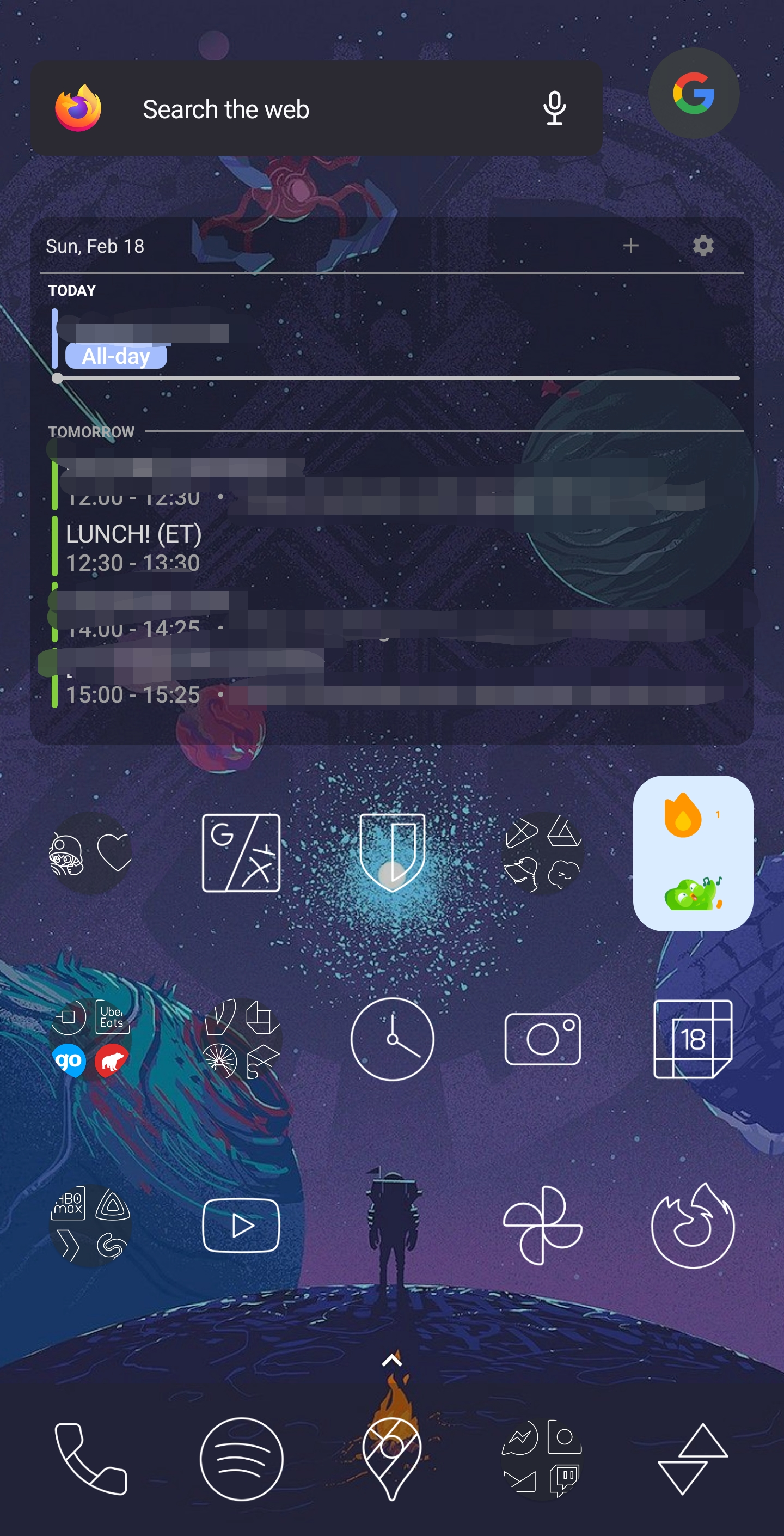

my friend did these for me yesterday



my friend did these for me yesterday



I always wondered if something like this could be possible in the future of terminals. glad to see kitty pushing the envelope! Looking forward to see this used for stuff like markdown rendering. Hoping this gets picked up by other terminals and neovim like the undercurl did.
Once I got used to single-directory filetree browsing plus fuzzy finding, I have never been able to comfortably use a traditional filetree anymore. most of them are not designed for efficient keyboard use (vscode and intellij at least) and don’t really help understanding the structure of the project imo (unless there arent that many files). For massive projects I find it easier to spend the initial effort of learning a few directory names and the vague structure using oil.nvim, and then eventually I can just find what I need almost instantly by fuzzy finding.


Seems cool, but it’s currently missing some pretty important languages (Hindi, Urdu, Thai, Bosnian/Croatian/Serbian, Swahili, etc). I’d put up with something limited like this if it was FOSS and/or selfhostable but it appears not to be
Just noticed in euclidean geometry, for any two line segments touching at a point there is exactly one triangle you can draw, i.e. a triangle is uniquely described by any two of its legs. In spherical geometry, there are two choices for the third leg!
Did you make this? I would get it printed lol


Thanks for the detailed explanation, makes a lot of sense! I guess what I did was set up a UEFI entry that specifies the location of the Linux kernel without any intermediate bootloader. Pretty sure I didn’t set the fallback, so I’m guessing that’s still owned by windows.


What is that latter fallback called? I set up my boot manually using an EFI stub last time I installed arch but wasn’t aware of any fallback bootloader


I love that these extensions exist and in theory they sound awesome. Unfortunately for a few reasons I’ve never been able to get in the habit of using Tridactyl (or any vim browser addon):
it doesn’t play nice with Google drive apps (which my company uses extensively), so if I use the vim shortcuts to cycle between tabs and open a Google doc, the next time I try to cycle tabs it will instead start typing in the document. (Alternatively I would never be able to interact with Google docs without manually enabling ignore mode)
hint mode works really well for some sites but a lot of sites have multiple anchors close together (eg one for an icon, one for text and one behind both) which leads to longer hints and difficulty figuring out which hint to actually use
Firefox doesn’t allow you to rebund the default “/” search (quick find) cycle keys. The default is c-G for next (not sure about previous); I would like to use n/N
On simple and well-designed “dumb” webpages it works amazing. I wish more sites were designed that way, but unfortunately a lot are made with the assumption of a mouse/touchscreen :(
Yeah, I’d be frustrated too if the chips were that far from my body and I had to lean over to get more…


I think neovim with kickstart has out-of-the-box support for go, or if not, should be configurable with two added lines (add the treesitter parser and LSP). Unlike nvchad and lunarvim and stuff, this is not a “distribution” of neovim but a good starting point for a config that makes it easy to slowly learn how to add stuff and change stuff as you see fit.
At the beginning, you can add languages that you need support for pretty easily by adding to a list of LSPs and Treesitter parsers that should be installed; later on you can start adding and configuring plugins as you wish.
I’d say it sets you up about the same level as Helix or a little less than VSCode.


Nix being an expression based functional language, it doesn’t really make sense to have something like let x=y; since this looks to most people like a statement (i.e. a line of code that gets executed as part of a sequence). This doesn’t exist in nix—instead you have expressions that get lazily evaluated, possibly out of order compared to what you’d expect. let x=y in makes it more clear that the variable binding you’re doing is only in scope for the current expression, which reads something like “let x refer to y in x + 3”
The function definition syntax is unusual but definitely not unintuitive imo. It captures the simplicity of the function semantics of nix—a function is just a mapping/transformation from one value (or set of values) to another. I don’t think it’s too much overhead to learn that they use : to mean this instead of =>
In terms of why they picked this syntax, it follows the traditions of other functional languages such as the ML family, Haskell etc.
I guessed the same. I have annoyingly wide feet, so I might give this a try, but I feel like it would leave too much loose lace
How exactly does the parallel lace one work? Like I don’t see where the laces come out underneath
Why? The quotes will be consumed by the shell when you execute the command, unless you do like "'{}'"
I’m pretty proud of my current setup (kinda similar to yours)


My solution for this has been on my Linux machine, using keyd, to swap alt and super, and map super+c, super+v to copy and paste. (I also map super+L, super+R, super+T and super+W in Firefox to the control- equivalents using keyd’s per-application bindings functionality)


Switching it at the terminal emulator level should work fine for every CLI/TUI though, right? Just have your terminal send 0x03 when you press C-S-c and copy selected text on C-c. I haven’t tested it but I’m sure that alacritty, wezterm, windows terminal and probably tmux can do this.


For the last point, even worse on Mac
So you write out all your commands as machine code I assume? wait no, obviously you set the transistor state manually with an electron gun?